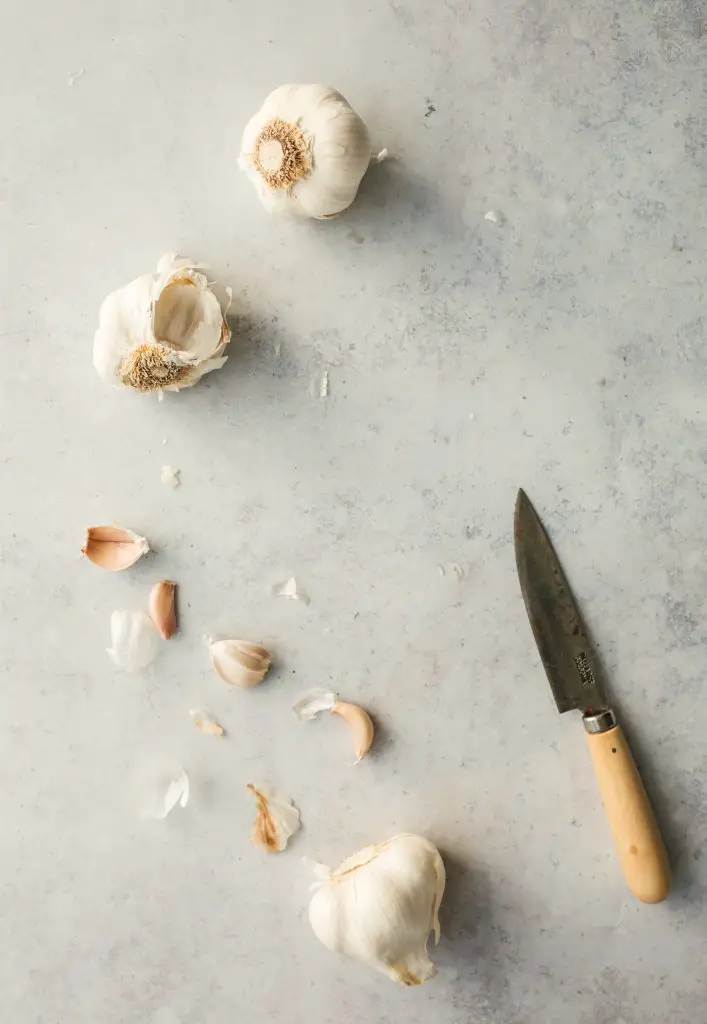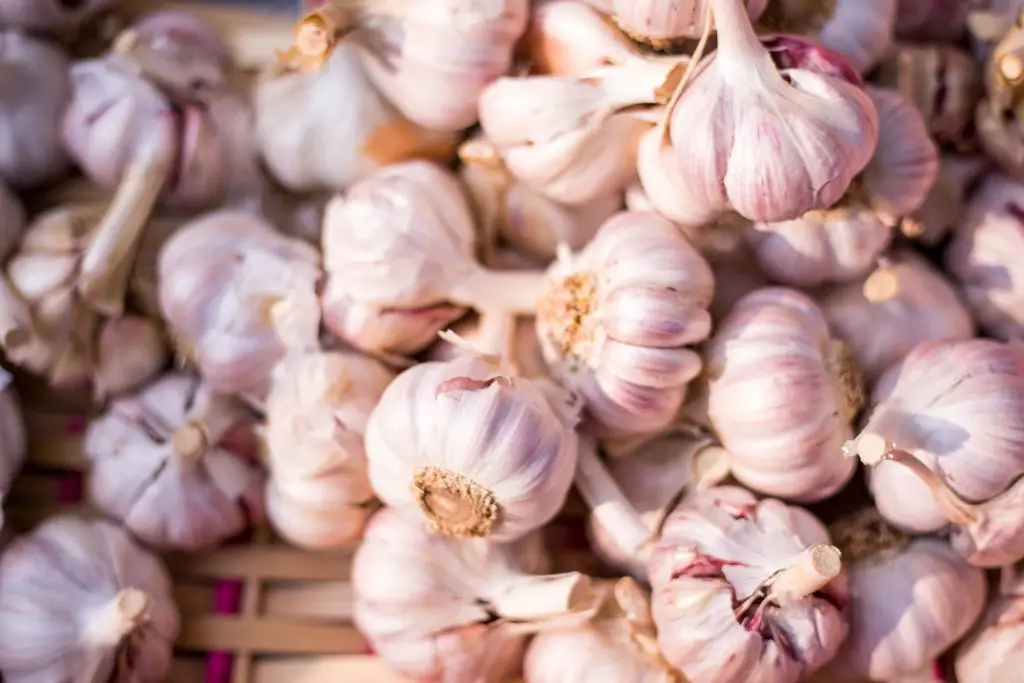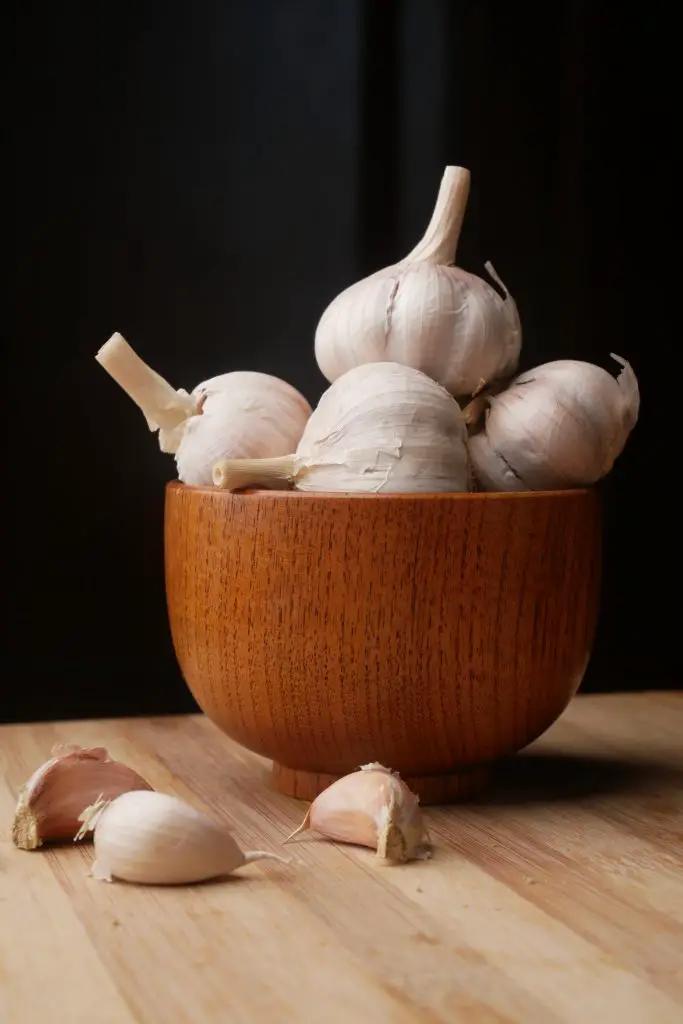Why Is My Garlic So Small? How Can I Grow Big Bulbs? Garlic is one of the most widely used herbs and it is used in almost every cuisine around the world. However, if you’re one of those people that grows garlic at home you may be wondering why your garlic is small compared to what you can buy in the stores and some cases why garlic has no individual cloves?
A couple of reasons why the garlic may be really small is because it may have been planted too early in the season or too late, Additionally, a 2021 study has shown that the size of the initial clove plants can also significantly affect the size of garlic that is produced later in the season.
So a couple of things that you can do to improve the size of garlic produced in a given year is to be extremely selective about the size of the garlic clove that you choose to plant. In my own garden what I now do when regrowing my garlic bulbs is that I only select the largest cloves to plant into the garden.

I do this by putting aside the largest bulbs from the previous year’s crops however to ensure that I plant only large bulbs I also select only the largest cloves from within the garlic bulb itself. Any smaller cloves that are found in the garlic are returned to the kitchen for use in cooking.
As such if you are planting garlic for the first time it is a good idea to purchase more garlic than you think you need. As a general rule, you should ideally be planting around 2 to 3 garlic bulbs per person and that will typically give you an entire year’s worth of garlic.
When Should Garlic Be Planted?
Garlic ideally should be planted in autumn if you want to produce garlic bulbs. This is important because for the garlic cloves to divide into new cloves within the new bulb it requires the clove to be exposed to cold temperatures for a period of time.
However, the precise timing that you plant garlic is trickier when you live in colder locations where the ground completely freezes over. In these locations planting the garlic too early in the season will affect the size of the garlic.
The reason for this is that the garlic will quickly produce green shoots once the clothes are planted. If the green shoots are exposed to a heavy frost the foliage will be destroyed which is not a problem as this will not affect the size of the Gaelic. However, if the garlic is allowed to reshoot and the weather again destroys the newly produced green shoots this will affect the yield.

So the ideal time to plant garlic in these regions is in a period that allows the top of the garlic to be destroyed only once. To ensure this happens the best time to plant is a week or two after the last frost which is in a period when the ground is yet to freeze solid making planting relatively easy but there is not sufficient time for the garlic to recover from a heavy frost or snow events before winter completely sets in.
If you live in an area that is not affected by extremely cold winters then the planting timing is significantly more forgiving. Generally, you can plant garlic in any part of the autumn and get quite a successful crop. I personally typically plant in mid-autumn however planning a little earlier or a little later will be just fine.
How To Plant Garlic
Apart from the precise timing required in cold climates for planting dates garlic is generally a really easy crop to grow that requires relatively little maintenance once the cloves go into the ground.
To plant the cloves get a bulb of garlic and split it into cloves but do not worry about removing the paper skin on the individual clothes as that will not affect the growth at all. Once the bulb has been separated into individual cloves the garlic can be planted approximately 5 to 7 inches apart in the soil.
The depth of the planting in the ground that is generally recommended is a depth of approximately 1 inch. In most cases that means that the very tip of the garlic can be seen above ground however this is not absolutely essential.

When planting the garlic into the ground it is important to put the pointy side upward and the flat basal plate download. The roots of the garlic will be produced from the basal plate.
Once the garlic is in the ground it is important to place a thick layer of mulch over the cloves to minimize weeds in areas that are relatively warm. In locations that are extremely cold where there are large amounts of snowfall, applying a layer of mulch is generally not absolutely essential because the weeds are not a problem in these regions.
In terms of the location that you plant garlic bulbs in it is generally recommended that you play them in a sunny location however this is not absolutely essential as garlic will tolerate some degree of shade though it will reduce the size of the bulbs, so the sunny the location the better.
The soil conditions should ideally be rich, moist, and free-draining soil that has plenty of organic matter in it, however garlic bulbs are generally not that fussy about the soil conditions other than avoiding areas where water is going to pool for extended periods of time.
Apart from these measures, there is little else to do in terms of looking after garlic other than to wait for the plants to grow. As mentioned above the garlic plants will produce green shoots relatively quickly which will typically reach a height of approximately 10 inches in spring.

Harvesting Garlic
Garlic should be harvested typically in mid to late spring when the foliage begins to yellow and dieback. At this point, the garlic will have reached its maximum size and will be ready to be removed from the garden.
When removing the garlic from the garden is important to gently lift the bulbs without damaging the decaying stems as they can be useful for braiding the garlic later on. At this point the garlic can be eaten immediately, however, if you do want to store it for extended periods of time you will need to allow it to dry out. This can be done by laying the bulbs out in an area that is undercover to ensure that most of the moisture has been removed.
The garlic can then be stored in a cool dark location that is well ventilated to ensure that there is no formation of mold. At this stage, it is important to select the largest bulbs and put them aside ready to go for planting the following year. Following these practices will give you the best possible chance of getting garlic plants of a reasonable size.
I hope you found this article useful and have great success growing your garlic at home, if you have any additional comments or questions please leave them in the section below.
Relevant Articles
How Many Cloves In A Head Of Garlic?
Garlic clove Vs Bulb: Are They The Same Thing?
Can You Plant Garlic In The Spring?
